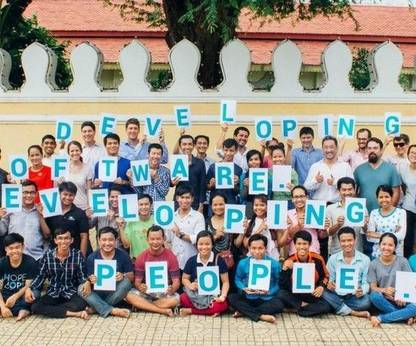And innovation doesn’t only mean creating groundbreaking ICT4D apps for indigenous communities to fight deforestation, but also to take advantage of the opportunities technology brings to development agencies themselves.
In our network, we see the huge potential impact a smart investment in digital can have, not only through digital tools for programs and beneficiaries but also to solve operational issues.
The Benefits of a Digital Strategy in Practice
An example. For seven years, I volunteered with a homeless advocacy group in my hometown of Portland, Oregon, USA. I started off just showing up once a week to hand out blankets, toothbrushes and peanut butter and jelly sandwiches. After a few months, I was leading teams of first-time volunteers and really getting to know my homeless friends–who they were and their stories.
A couple of years into volunteering, the founder asked me what I did professionally. I mentioned that I worked in Digital Branding. “Oh like websites and stuff?” he followed up, “Do you think you could help us fix our website?” I told him I would look into it and recruited my roommate, a web developer, to help me. We got to work.
While my roommate was working on the website concept, I applied for the Google AdWords Grant on behalf of our nonprofit organization.
Leveraging Digital Marketing Grants for Nonprofits
The Google AdWords Grant provides $10,000 USD of in-kind advertising every month from Google Ads, an online advertising solution from Google. After confirming we were eligible, I got to work implementing Google AdWords on to our new website.
In October 2013, YouTube celebrity Kid President invited one million people to celebrate “Soctober”. The idea was, that during the month of October people would donate socks (and other personal hygiene products) to a local homeless shelter.
That night, I logged into our Google AdWords account and started investing our $10,000 monthly budget on terms like “Soctober” “Portland homeless” “Kid President Portland.” The following Thursday, new faces showed up to my local church carrying loads of brand new socks for our homeless friends. The founder of our non-profit asked how they had heard about us and they responded they had done a simple Google search after seeing the Kid President video.
That was the first time the founder was genuinely interested in what went into website development and how search engine optimization works.
The Danger of not Investing in Digital
"Until nonprofit leadership understands how technology can work with digital marketing to their benefit, it won’t be a priority and nonprofits will continue to lose out on huge benefits."
This can be illustrated by the fact that most nonprofits don’t have a formal, internal digital strategy. A recent survey conducted by NetHope on senior development professionals in donor agencies, government, development consulting firms, nonprofit organizations, foundations, and corporations found that 70% of its nonprofit members lack a digital strategy.
The survey also found that only half of the nonprofit executives believe that digital disruption will have a significant impact on their operations in the near future.
I believe nothing could be further from the truth, even in Cambodia. Although we have a lot of work to do to change the current perspective–both for nonprofit and business leaders alike.
Konrad Adenauer Stiftung–a German investment and thinktank here in Cambodia– recently interviewed business leaders and representatives from the government, development partners and civil society to discuss how prepared Cambodia is for a digital economy.
Here are Some Key Takeaways:
1. Only half of the employees surveyed understand what a “digital economy” entails.
2. Half of them think their information and communication technologies (ICT) skills are at most “average”.
3. More than 72% of the employees say they cannot depend on their company to upskill them.
4. Around half of the companies say digital infrastructure plays a large part of their business operations and rates their existing digital infrastructure as “good”.
5. 83% of firms believe that digital technologies will significantly transform their industry in the next 10 years. But only 42% believe that the effect of such transformation will have a positive outcome on their company and 44% are not sure how it will play out.
Need some direction in digital strategy? Let's connect and come up with a plan for your organization to tackle your digital strategy goals!





